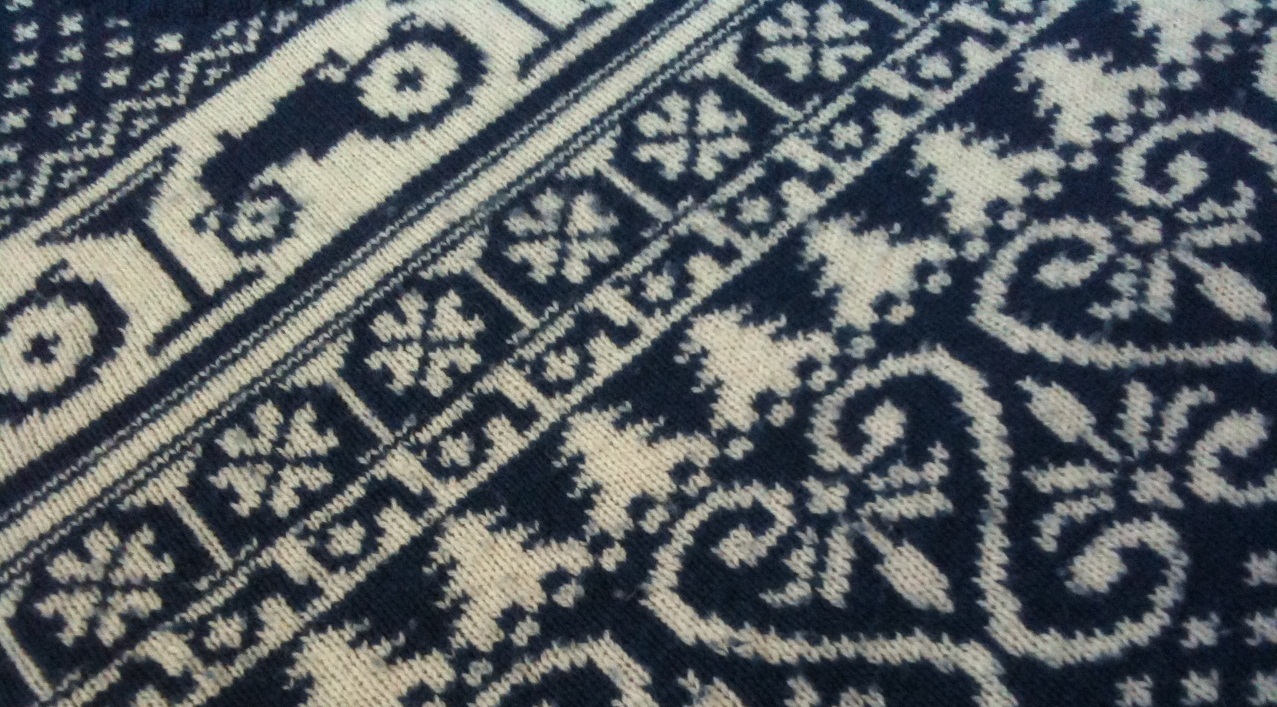
February 17, 2013, by Stephen Mumford
Nordic Knitwear – We’re all Scandinavian Now
Twenty years ago you have the feeling that if a Danish TV series had been aired in the UK it would’ve involved Scandinavian characters inexplicably speaking English to each other. But the appetite for Nordic noir seems insatiable nowadays, all in its original language and subtitled: Forbrydelsen, Broen, Wallander, Borgen, and so on. And why not? Those languages are so musical and wondrous to our ears. We want to experience the original languages because we all want to feel Scandinavian now.
Perhaps it is based on something as vulgar as economic prosperity, but there is certainly a growing self-confidence in those northern countries that has seen a rise in their cultural impact on the world: in film, TV, literature, furniture design and fashion.
Nations know that the way in which their greatness will be judged by history is through their cultural legacy. And it is certainly Scandinavia’s time. It is not just that they have the confidence to give us original-language productions, but it’s also what we want. We watch because we want an authentic Nordic cultural experience, which couldn’t possibly be complete without the language.
I love the way Danish/Norwegian has nine vowels. As well as counting y as a vowel, they also add ø, å and æ. And in Danish, consonant sounds have almost disappeared. Fun is made of this in Broen when the Swedes can’t pronounce lead Danish character Martin Rohde’s name right (and I once had a tough time asking directions to Køge, south of Copenhagen). I also love the way that Norwegians and Danes pronounce the language so differently, even though it is virtually identical when written. There’s a running joke between them that they can’t understand each other. Swedes have a different language yet Norwegians and Danes understand them better than they understand each other.
The rise of Scandinavia has to do with more than economic power, however. I’ve come to know those countries well in many visits over the past 15 years. And there is indeed something wonderfully appealing about the societies that have been created. They have not yet achieved utopia but the outsider sees a society far more at peace with itself than back home. There is better gender equality, the police sometimes seem more like social workers, and the gap between rich and poor is visibly narrower. And everyone is so darn cool, young and old alike, in dress, attitudes and behaviour. Why wouldn’t we all want to be Scandinavian? It’s aspirational.
I am a bit nervous about making observations like these. I fear lapsing into cultural stereotypes, especially when I have seen such beautiful Norwegian mountains and fjords and met so many wonderful, calm and thoughtful Scandinavian people. That may be inevitable when I move mainly in academic circles. At least all those crime dramas show that there is a darker side. To avoid those oversimplifications, it’s important that our universities maintain a proper academic study of cultures, languages and literatures. The benefits of better intercultural understanding are too numerous to list; and the dangers of cultural misunderstanding sometimes too catastrophic to contemplate.
I’m expecting world interest in Scandinavia will continue to grow. I think we are going to see more Nordic knitwear on show in the UK, more tourists visiting the northern countries, more reading the literature and more even speaking the language. Tusen takk. Vær så god!

I couldn’t agree more. But would add that you need to know where all that came from and why Danish and Norwegian are similar (though not I would argue ‘virtually identical’) in (some of) their written form(s). That’s why you need Viking Studies!
The reason is maybe that Scandinavia is the perfect reference for Britain, and Britain rules the world, still. When comparing Scandinavia with Russia (not – ruling the world) we are too busy with our seriusness and too much in love with a perfect order in sight. We are naively maneuvering into this chasm of making improvements, day by day. We are chocked and dazled whenever there is some kind of backfire. We are the ones building brick by brick now, while you Brits have a sneaking feeling of something else. I don’t think the Russian would like to live the Scandinavian way (despite everything), not even the Danish way – where “all” understanding is lost in the signs (vowels). A Russian would get lost in the transparency of everything. Rather: life IS irrational and full of baby universes. It would not help the Russian that we are wearing “improvised” knitted sweaters, we are still heading towards a future in perfect alignment with an (empirically) evidence based life incinsistent with any vulgar and brute contradiction. But I (think I) know that’s not why you love (?) Scandinavia Stephen.
I am agree with your thought Svein Anders Noer Lie.
I really appreciate this wonderful image that you have provided for us.
Thanks for sharing this image.
Scandinavian Art